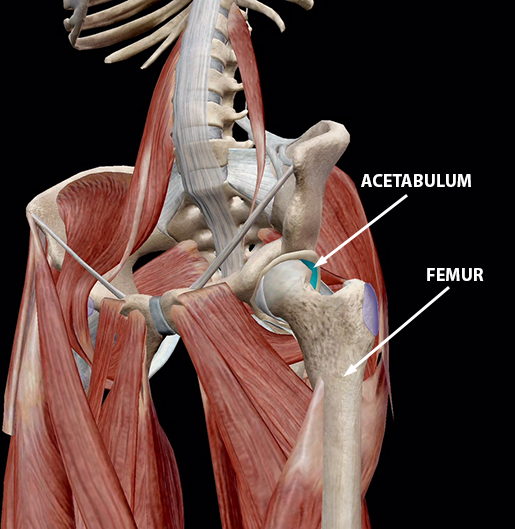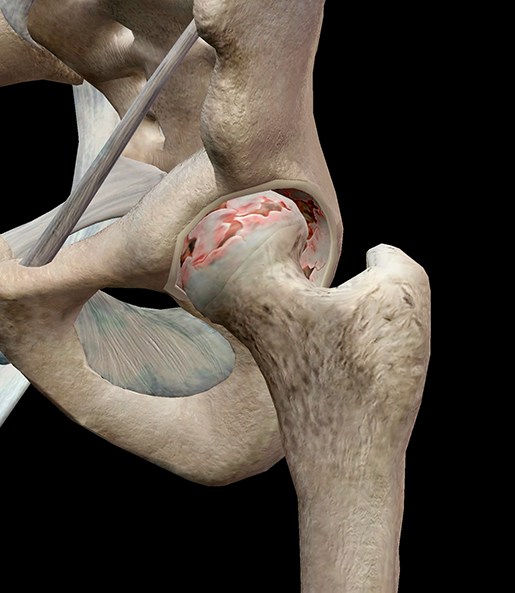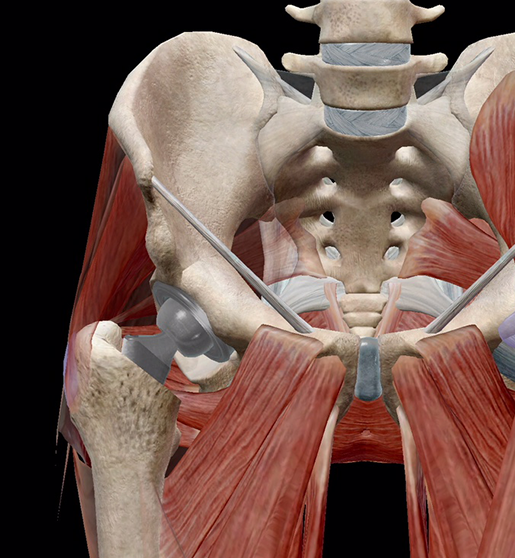Posted on 9/15/16 by Madison Oppenheim
Today's blog post is brought to you in part by the saying "you don't know what you have until it's gone."
Your hip is an essential joint that I'm sure you don't put much thought into during the day while you bend down to tie your shoe or get out of your chair for your three o'clock bathroom break. But neither of those activities would be possible without it.
The hula hoop is a classic childhood activity seconded only by the limbo. When doing hula, you shake and shimmy until you drop the hoop and/or beat your competitor (I always made everything into a competition). Your hip enables you to shake your way to victory and beat Ashley, who is weak.
Your hip is a ball-and-socket joint that gives you mobility in all directions: forward, backward, left, and right, as well as some rotation. It’s comprised of the pelvis and femoral head (upper part of femur). The femur articulates at a concave surface formed by the hip bones, called the acetabulum.
 Image captured from Muscle Premium.
Image captured from Muscle Premium.
The proximal head of the femur and acetabulum's surface is covered by articular cartilage that decreases friction and protects the bones.
As we get older, things start going south.
Osteoarthritis is something you’ve probably heard about, thrown around in conversations with your aunt, and unfortunately with age, it can be like a dark cloud, looming over your head and following you everywhere—even to your trip to the store for Q-tips.
Osteoarthritis is sometimes referred to as "degenerative joint disease" because the cartilage on the surface of joints is worn away with wear-and-tear. This can cause pain and stiffness, and can make it difficult to complete daily tasks (e.g., the aforementioned bathroom break).
 Image captured from Muscle Premium.
Image captured from Muscle Premium.
It’s a degenerative type of arthritis that usually occurs in people over age 50, but it may pop up in younger people, too. The cartilage in the joint wears away over time and becomes frayed and rough, exposing bone surfaces beneath, which causes the pain.
Other symptoms include tenderness, stiffness, and pain (obviously).
There are many risk factors that can cause osteoarthritis besides age, including a family history of osteoarthritis, a hip joint injury, obesity, and developmental dysplasia of the hip (improper hip joint formation at birth).
Although there’s no cure for osteoarthritis, there are some possible treatments for the pain and to improve your mobility.
Lifestyle changes are an option that can protect your hip joint and slow the osteoarthritis process down. These include minimizing activities that will make it worse (take the elevator instead of the stairs), switching from high-impact to low-impact activities (from running to swimming), and losing weight, which reduces stress on the joint.
Physical therapy can help improve range of motion and flexibility, as well as strengthen muscles in the hip and leg.
There are also assistive devices like canes, crutches, and walkers that can improve mobility and can make you feel more independent. Long-handled reachers can help you pick up low things so you don't have to bend over and experience pain.
There are also a variety of medications to treat pain: acetaminophen (over-the-counter pain reliever you can grab at your local drugstore), nonsteroidal anti-inflammatory drugs, which relieve pain and reduce inflammation, and corticosteroids, which are powerful anti-inflammatory drugs that can be taken orally or injected into the joint.
Hip hop, jazz, EDM, take your pick. After your pain is relieved you’ll want to get up and dance!
If your doctor recommends surgery to treat your hip osteoarthritis, there are a few options.
An osteotomy is where either the femoral head or the socket is cut and realigned—this takes pressure off of the hip joint.
There’s also hip resurfacing, where the damaged bone and cartilage in the acetabulum are removed and a metal shell is placed instead. The femoral head is capped with a smooth metal covering to reduce friction.
The last option is a total hip replacement. Both the damaged acetabulum and the femoral head are removed and replaced with either metal, plastic, or ceramic joint surfaces to restore the hip's function. So basically you can become bionic (if you choose metal); talk to your doctor about your options.
 Image captured from Muscle Premium.
Image captured from Muscle Premium.
Be sure to subscribe to the Visible Body Blog for more anatomy awesomeness!
Are you a professor (or know someone who is)? We have awesome visuals and resources for your anatomy and physiology course! Learn more here.
Additional Sources:
When you select "Subscribe" you will start receiving our email newsletter. Use the links at the bottom of any email to manage the type of emails you receive or to unsubscribe. See our privacy policy for additional details.
©2024 Visible Body. All Rights Reserved.